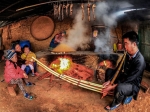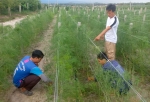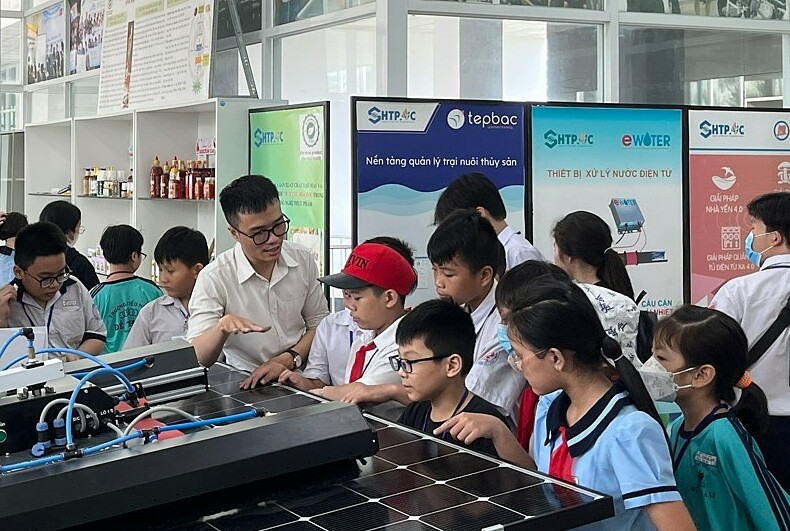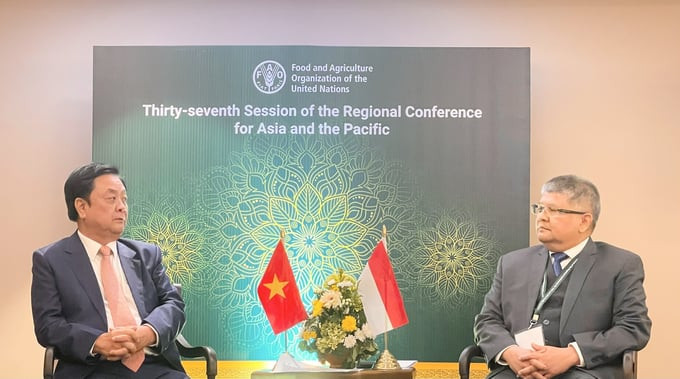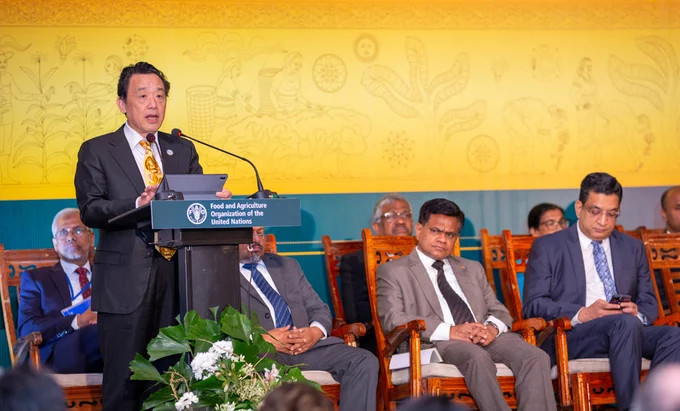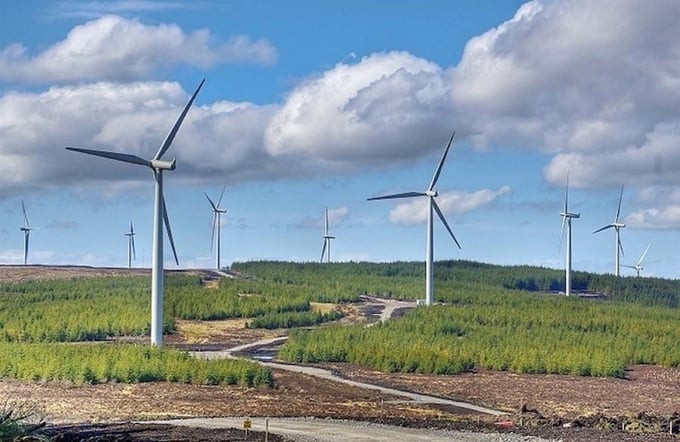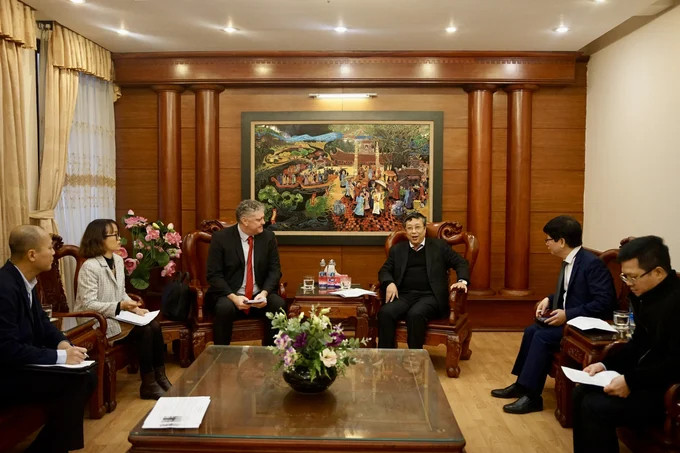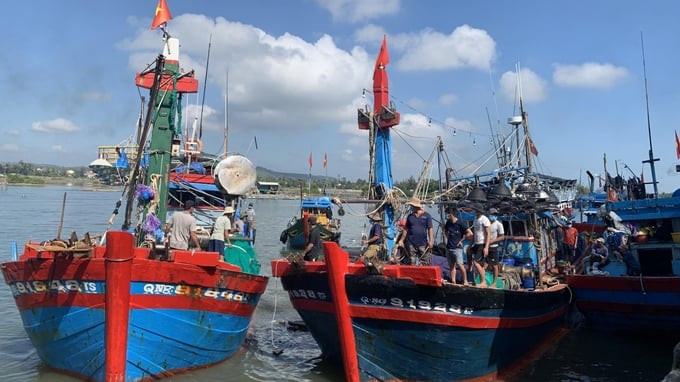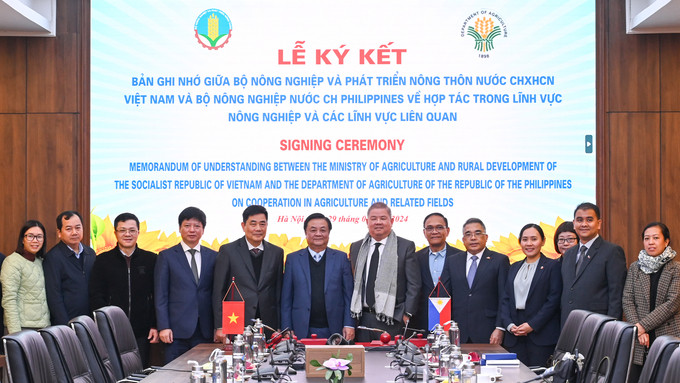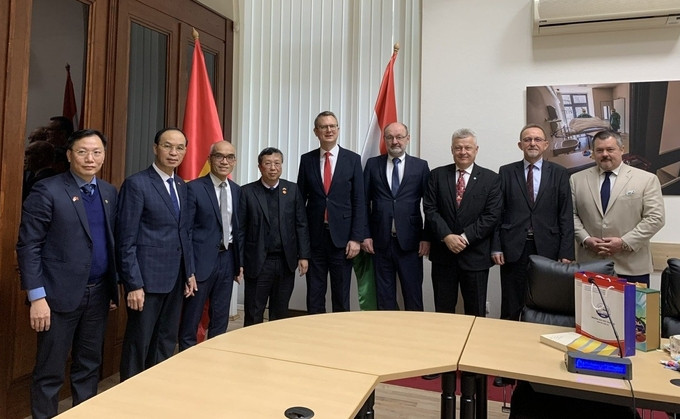In 2015, Bac Ninh Department of Agriculture and Rural Development developed the Project "Development of hi-tech agricultural production in the period 2015-2020", step by step applying high technology (CNC) in various fields. farming, raising cattle, poultry and aquatic products, contributing to increase the value of income per farming unit.
Create a tripod
With the characteristics of the land of Kinh Bac, the land is tight, the population is crowded, the population density is more than 1,350 people/km2, agricultural products account for a small proportion. Therefore, in order to increase the value of 1 hectare of agricultural land, Bac Ninh considers the application of science and technology, especially CNC, a key stage to focus on investing in three fields of cultivation, husbandry and aquaculture. , creating a solid tripod.
In which, the field of cultivation has many scientific and technical advances that have been widely applied, especially technical advances in plant varieties, production processes according to VietGAP standards, and home technology. grid, greenhouse, automatic irrigation. Initially forming large-scale concentrated commodity production areas, bringing economic efficiency of hundreds of millions of dong/ha/year, contributing to increasing the value of income per farming unit in 2016 by 10, 5% compared to 2010.
Currently, the whole province has about 72,430 m2 of net houses, 11,000 m2 of greenhouses for producing high-grade vegetables and flowers; 500 m2 for potato seed production and nearly 2,000 m2 for orchids from tissue culture; six vegetable production models according to VietGAP standards with a total area of about 90 hectares. In particular, the experimental agricultural production center in Viet Doan commune, Tien Du district, with an area of 16.9 hectares, has focused on researching, producing and supplying to the market safe vegetable products according to standards. VietGAP standards and high quality medicinal mushrooms and fungi by tissue culture technology.
Along with the cultivation industry, the livestock sector is also interested in investment by many businesses, especially CNC farming. Up to now, the province has 42 livestock and poultry farms that apply closed cage technology, treat livestock waste by using biogas tanks and biological products. In which, there are five livestock establishments that have automated the entire production process; four breeding establishments applying information technology in breeding herd management. Leading in the livestock sector is DABACO Vietnam Group Joint Stock Company, with six livestock enterprises that have been granted the Certificate of CNC agricultural enterprises by the Ministry of Agriculture and Rural Development.
In addition, new genetic and biological technologies have been widely applied by breeders to create high-yield and high-quality livestock breeds, such as three- to three-year high yielding super lean foreign pigs. four blood; like swan, chicken, duck super meat, super egg.
With the advantage of having tributaries of Duong, Cau and Thai Binh rivers flowing through, cage fish farming on the river also thrives. The province currently has 1,595 fish cages, with an average yield of four to six tons/cage. The output of harvested fish is estimated at more than 6,400 tons/year. In addition to raising fish in river cages, models of intensive fish farming in earthen ponds using water fans and biological products to treat the pond environment have been expanded in many localities, helping fish grow and develop. good. Up to now, the area of intensive fish farming applying CNC has reached about 900 hectares, accounting for 16.4% of the province's aquaculture area.
Sustainable agricultural development
Although certain results have been achieved, the proportion of agricultural production applying high-tech agriculture in Bac Ninh is still small. Therefore, in order for agricultural production to develop sustainably, first of all, the authorities in the province need to review and expand the planning of agricultural production areas applying CNC in the direction of concentration, large-scale, and suitable conditions. advantages of each region. In parallel with the planning, it is necessary to accelerate the accumulation of land in the direction of transfer or for the long-term, creating conditions for organizations and individuals, especially enterprises to invest in agricultural development and apply CNC.
Second, to improve the scientific and technological capacity of production and research facilities in the area, as well as strengthen cooperation with domestic and foreign scientific research institutes and centers for experimental research. , application and technology transfer, especially in the introduction of new varieties of plants and animals, and modern farming processes into production.
Third, in agricultural production applying CNC, enterprises are the tractors, the driving force for development. Therefore, it is necessary to develop specific policies to strongly attract businesses to invest in the agricultural field applying CNC such as land rent exemption and reduction, land use tax, corporate income tax, incentives on loans, investment support to build infrastructure in the project area in the form of public-private cooperation...
Fourth, each region, each locality, based on specific advantages and conditions, selects suitable crops, livestock and production technologies to create the highest production efficiency; boldly convert some areas of rice cultivation with low efficiency to other crops (fruit trees, vegetables, flowers, medicinal plants) of higher economic value, or develop the livestock farm economy , aquaculture to improve production value and income for farmers.
Fifth, promote consulting and support activities for organizations and individuals in agricultural production applying CNC to build and develop product brands, focusing on the strong products of enterprises in the immediate future. and local products. At the same time, strengthen linkages and trade promotion with provinces and cities in the region and Hanoi city in promoting and consuming agricultural products, especially agricultural products applying CNC, safe products. to increase economic efficiency and stabilize income for farmers.
The average growth rate of the agricultural sector in the period 1997 - 2016 reached 4.5%/year. In which, some key products such as rice increased from 39.3 quintals/ha in 1997 to 62 quintals/ha in 2016; live meat increased from 29.5 thousand tons to 93.7 thousand tons; aquaculture productivity increased from 1.44 tons/ha to 6.5 tons/ha, aquaculture production increased from 6,000 tons to 38,000 tons. The value of products obtained on 1 hectare of cultivation reached 108 million VND, 6.4 times higher.




